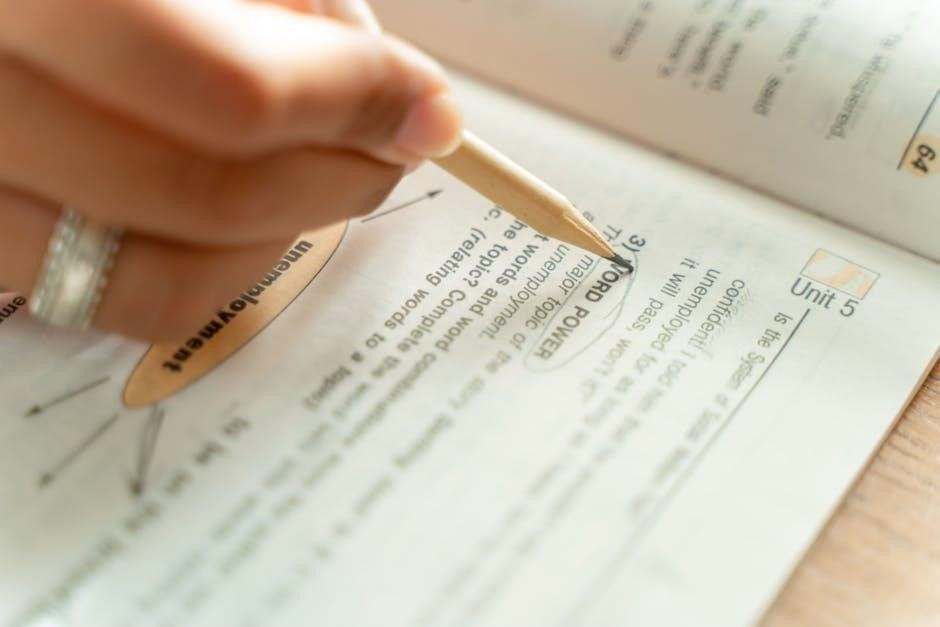texas class b exempt study guide

This comprehensive guide is essential for drivers seeking a Texas Class B Exempt License, offering detailed insights and resources to ensure confidence and success on the exam.
1.1 Overview of the Texas Class B Exempt License
The Texas Class B Exempt License is designed for drivers operating non-commercial heavy vehicles, such as buses, trucks, and other large vehicles weighing over 26,001 pounds. Unlike a commercial driver’s license (CDL), this license does not require a commercial learner’s permit or endorsements for specific cargo types. It is tailored for individuals who drive heavy vehicles for non-business purposes, such as farmers, firefighters, or volunteers. The license ensures drivers meet safety standards and understand traffic laws specific to larger vehicles. This guide provides a detailed overview of the license, its requirements, and the skills needed to operate Class B exempt vehicles safely and legally in Texas.

1.2 Importance of the Study Guide for Passing the Exam
The Texas Class B Exempt Study Guide is a vital resource for anyone preparing to take the licensing exam. It provides a structured approach to understanding the key concepts, rules, and practices necessary for safe and legal operation of Class B exempt vehicles. The guide covers essential topics such as vehicle classification, traffic laws, and safety procedures, ensuring drivers are well-prepared for the exam. By using the study guide, applicants can identify areas where they need improvement and focus their study efforts effectively. Additionally, the guide includes practice tests and flashcards, which simulate real exam conditions and help build confidence. Its comprehensive coverage of Texas-specific regulations and driving best practices makes it an indispensable tool for achieving success on the Class B Exempt Exam.

Licensing Requirements for Texas Class B Exempt Vehicles
Obtaining a Class B Exempt License requires meeting specific eligibility criteria, submitting necessary documents, and completing the application process to legally operate exempt vehicles in Texas.
2.1 Eligibility Criteria for a Class B Non-Commercial Driver License
To qualify for a Class B Non-Commercial Driver License in Texas, applicants must be at least 18 years old and meet specific residency requirements. They must also pass a vision test and provide proof of identity and legal status. Additionally, applicants must not have any disqualifying medical conditions that could impair their ability to operate a vehicle safely. A valid Social Security number and completed application form are also required. It’s important to review all eligibility criteria thoroughly to ensure a smooth application process.
2.2 Application Process for a Texas Class B Exempt License
The application process for a Texas Class B Exempt License begins with completing the CDL-2 form, the Texas Class A or B Driver License Application for Non-CDL Exempt Vehicles. Applicants must gather required documents, including proof of identity, residency, and Social Security number. A vision test is mandatory, and applicants must meet medical certification requirements if applicable. Once the application is submitted, candidates will need to pass a written knowledge test covering traffic laws, safe driving practices, and vehicle-specific regulations. For certain vehicles, a skills test may also be required. Fees for the application and testing should be paid at this stage. It is crucial to ensure all steps are completed accurately to avoid delays in obtaining the license.
2.3 Required Documents for the Application
To apply for a Texas Class B Exempt License, specific documents must be submitted. These include proof of identity, such as a valid passport or birth certificate, and proof of residency in Texas, like a utility bill or lease agreement. Applicants must also provide their Social Security number, which can be verified through a Social Security card or W-2 form. If applicable, a valid medical certification card may be required. Additional documentation, such as a completed CDL-2 form and proof of vehicle insurance, should be ready. Ensure all documents are current and accurate to avoid processing delays. These requirements are essential for a smooth application process and obtaining the license.
2.4 Fees Associated with the Class B Exempt License
The fees for obtaining a Texas Class B Exempt License vary based on the license term and additional endorsements. Typically, the base fee ranges from $25 to $60, depending on the duration of the license. Additional costs may apply for endorsements, such as hazardous materials or passenger transport. Payment can be made via cash, credit card, or check at the Texas Department of Public Safety (DPS) office. It’s important to note that fees are non-refundable, even if the application is denied. Applicants should also budget for potential testing fees and medical certification costs, if required. These fees ensure the issuance and maintenance of the license, allowing drivers to operate legally and safely in Texas. Always verify the current fee structure with the DPS before submitting the application.

Vehicle Classification and Exemptions
Class B vehicles in Texas are heavy-duty trucks, buses, and tractors with a GVWR over 26,001 lbs, excluding trailers. Exemptions apply to certain farm vehicles and non-commercial use.
3.1 Understanding Class B Vehicles in Texas
Class B vehicles in Texas are defined as heavy-duty trucks, buses, and tractors with a Gross Vehicle Weight Rating (GVWR) exceeding 26,001 pounds. These vehicles are typically used for non-commercial purposes and include farm vehicles, fire trucks, and certain types of buses. Understanding the classification is crucial for licensing, as it determines the requirements for obtaining a Class B Exempt License. These vehicles are distinct from commercial vehicles, which require a Commercial Driver’s License (CDL). The Texas Department of Public Safety (DPS) provides specific guidelines to help drivers identify if their vehicle falls under the Class B category. Proper classification ensures compliance with state regulations and safety standards.
3.2 Exemptions for Class B Vehicles Under Texas Law
Under Texas law, certain Class B vehicles are exempt from specific regulations, particularly those related to commercial use. These exemptions are designed to accommodate vehicles used for non-commercial purposes, such as farm tractors, firefighter vehicles, and other specialized equipment. For instance, farm tractors operated by farmers for agricultural purposes are not subject to the same licensing requirements as commercial vehicles. Additionally, vehicles owned and operated by fire departments or other emergency services may qualify for exemptions. However, these exemptions do not apply to all Class B vehicles, and drivers must still comply with safety standards and traffic laws. It’s important to review Texas DPS guidelines to determine if your vehicle qualifies for exemptions and to understand any restrictions that may still apply. Proper documentation and adherence to state rules are essential to maintaining exempt status.

Safe Driving Practices for Class B Exempt Vehicles
Mastering safe driving practices is critical for Class B exempt vehicles. This includes proper pre-trip inspections, night driving techniques, and emergency procedures to ensure safety on the road.
4.1 Pre-Trip Inspection Requirements
A pre-trip inspection is crucial for ensuring the safety and roadworthiness of Class B exempt vehicles. Drivers must check tires, brakes, lights, mirrors, and fluid levels. They should also inspect the condition of the vehicle’s suspension, steering, and exhaust systems. Ensuring all safety equipment, such as reflectors and fire extinguishers, is present and functional is mandatory. Additionally, drivers should verify that all cargo is properly secured to prevent shifting during transit. A thorough inspection helps identify potential issues before they lead to accidents or breakdowns. By following a systematic approach, drivers can minimize risks and comply with Texas safety regulations. Regular pre-trip inspections are essential for maintaining safety standards and protecting both the driver and other road users.
4.2 Night Driving Tips for Class B Vehicles
Night driving requires heightened vigilance and specific strategies to ensure safety. Reduce speed to compensate for reduced visibility and increase following distance to maintain a safe gap. Use high beams cautiously, avoiding blinding other drivers, and dim them when approaching oncoming traffic. Avoid overreliance on GPS; familiarize yourself with the route beforehand. Keep the cab well-lit to maintain alertness without causing glare. Be extra attentive to pedestrians, cyclists, and animals that may appear unexpectedly. If headlights from oncoming vehicles cause glare, look toward the right side of the road to maintain focus. Keep emergency flashers handy and ensure all vehicle lights are functional before driving. Always carry reflective triangles or flares for visibility in case of a breakdown. Stay hydrated, avoid fatigue, and take breaks if drowsiness sets in. Continuous awareness and cautious driving are key to navigating safely at night.
4.3 Emergency Procedures for Heavy Trucks
In case of a breakdown or emergency, move your vehicle to a safe location off the road to avoid obstructing traffic. Engage the parking brake and turn on hazard lights to increase visibility. Use reflective triangles or flares around the vehicle to alert other drivers. Check for injuries and provide assistance if possible, but avoid moving injured individuals unless there’s imminent danger. Call emergency services immediately if medical attention is needed. Secure the vehicle by turning off the engine and ensuring it’s in a stable position. Notify your dispatcher or supervisor about the situation. Stay with the vehicle until help arrives, and avoid standing in traffic lanes. Keep an emergency kit with essentials like a first-aid kit, flashlight, and fire extinguisher. Familiarize yourself with the location of emergency exits and tools on your truck. Always prioritize safety and follow proper protocols to minimize risks during emergencies.

Traffic Laws and Regulations for Class B Exempt Vehicles
Understand speed limits, right-of-way rules, and prohibited equipment on Texas highways. Familiarize yourself with weight restrictions and special regulations for heavy trucks to ensure safe and legal operation.
5.1 Speed Limits for Heavy Trucks on Texas Highways
Heavy trucks in Texas are subject to specific speed limits to ensure safety on highways. Generally, the maximum speed limit for heavy trucks is 70 mph, though this may vary depending on the road type and conditions. Nighttime speed limits may be lower, typically 65 mph, to account for reduced visibility. Drivers must always adhere to posted speed limits, as exceeding them can result in fines or license suspension. Additionally, speed limits may be reduced in construction zones or school areas, and drivers should be vigilant for variable speed limit signs. It is crucial to adjust speed according to road conditions, such as rain, fog, or heavy traffic, to maintain control of the vehicle and prevent accidents. By following these regulations, drivers can contribute to safer roads and avoid legal penalties.
5.2 Right-of-Way Rules for Large Vehicles
Right-of-way rules are critical for drivers of large vehicles to ensure safe and orderly traffic flow. When turning, drivers must yield to oncoming traffic and pedestrians, using turn signals to indicate their intentions. Large vehicles often have blind spots, so extra caution is needed when changing lanes or merging. When approaching intersections, drivers should always prioritize pedestrians and other vehicles with the right-of-way. Emergency vehicles, such as ambulances or fire trucks, must be given the right-of-way immediately by pulling over safely. Additionally, large trucks should never attempt to pass slower-moving vehicles in a manner that could endanger others. Patience and situational awareness are key to navigating complex traffic scenarios. Violating right-of-way rules can result in serious legal consequences, including fines and license suspension. Adhering to these regulations is essential for the safety of all road users.
5.3 Prohibited Equipment on Texas State Highways
On Texas state highways, certain equipment is prohibited to ensure road safety and prevent damage to infrastructure. Cleats, lugs, flanges, studs, spikes, and other extensions that could harm the road surface are illegal, except for tire chains, which are permitted under specific conditions. Additionally, any equipment that obstructs vision, such as oversized mirrors or improperly mounted accessories, is also prohibited. Drivers must ensure their vehicles are equipped with DOT-approved tires and brakes to meet safety standards. Prohibited equipment violations can result in fines, penalties, or even license suspension. It’s crucial to review and comply with all equipment regulations before operating a Class B exempt vehicle on Texas highways to avoid legal consequences and maintain road safety. Always check for updates to equipment laws to stay compliant.

Exam Preparation and Study Tips
Study regularly, use practice tests, and flashcards to reinforce knowledge. Focus on understanding key concepts and develop effective test-taking strategies to excel on the exam.
6.1 Overview of the Texas Class B Exempt Exam Structure
The Texas Class B Exempt exam consists of multiple-choice questions covering laws, safety, and vehicle operation. Topics include pre-trip inspections, night driving, and emergency procedures. The test ensures drivers understand traffic laws, speed limits, and right-of-way rules specific to heavy trucks. It also addresses prohibited equipment on state highways. The exam structure is designed to assess both knowledge and practical skills necessary for safe driving. Proper preparation involves studying the provided handbook and utilizing practice tests to familiarize oneself with the question format and content. Understanding the exam structure helps candidates focus their study efforts effectively, ensuring they are well-prepared for the actual test.
6.2 Effective Test-Taking Strategies

To excel on the Texas Class B Exempt exam, employ strategies that enhance focus and accuracy. Begin by reading each question carefully, ensuring you understand what is being asked. Eliminate obviously incorrect answers to increase your chances of selecting the right one. Allocate time wisely, spending no more than 1-2 minutes per question to maintain a steady pace. If unsure, make an educated guess rather than leaving it blank. Stay calm and avoid second-guessing yourself, as this can lead to unnecessary mistakes. Utilize practice tests to familiarize yourself with the exam format and identify weak areas for further review. Additionally, review the Texas DPS handbook thoroughly, focusing on high-weight topics like pre-trip inspections and traffic laws. By combining these strategies, you can approach the exam with confidence and maximize your score.

6.3 Recommended Study Materials and Resources
To effectively prepare for the Texas Class B Exempt exam, utilize a combination of official and supplementary resources. The Texas Department of Public Safety (DPS) handbook is a primary source, offering detailed information on traffic laws, vehicle classification, and safe driving practices. Additionally, online platforms provide flashcards and practice tests tailored to the exam format, helping to identify and address knowledge gaps. Consider enrolling in a driver education course or workshop, where instructors can offer personalized guidance and insights. Lastly, leverage mobile apps and study guides specifically designed for Class B Exempt license preparation. These tools collectively ensure a comprehensive understanding of the material, boosting confidence and readiness for the exam.

Practice Tests and Flashcards for the Class B Exempt Exam
Practice tests and flashcards are essential tools for assessing knowledge and improving retention of key concepts, helping you prepare effectively for the exam.
7.1 Sample Test Questions for the Class B Exempt Exam
Sample test questions are designed to simulate the actual exam experience, covering topics like speed limits, night driving, and emergency procedures. These questions address key areas such as safe driving practices, traffic laws, and vehicle handling. They include multiple-choice, true/false, and scenario-based queries to test your understanding of critical concepts. For example, questions might ask about the correct actions when descending steep grades or the proper placement of flares around a disabled truck. By practicing with these sample questions, you can identify weak areas and focus your study efforts effectively. Consistent practice ensures familiarity with the exam format and builds confidence for the real test.
- What is the maximum speed limit for heavy trucks on Texas highways at night?
- What should you do when turning right in a vehicle that cannot stay in its lane?
- How should you downshift when descending a steep grade?
Regular practice with these questions will help you achieve a high score and master the material.
7.2 Flashcard Sets for Key Terms and Concepts
Flashcard sets are a valuable tool for memorizing essential terms and concepts related to the Texas Class B Exempt Exam. These cards cover critical areas such as safety regulations, vehicle classifications, and driving techniques. Examples include definitions of Class B vehicles, pre-trip inspection checklists, and night driving tips. Flashcards also focus on traffic laws, such as speed limits for heavy trucks and right-of-way rules. By using these flashcards, you can quickly review and retain important information. Portable and easy to use, they allow you to study anytime, anywhere. Many flashcard sets are available online or through study guides, ensuring you have access to the most relevant and up-to-date material. Regular use of flashcards enhances retention and helps you feel more prepared for the exam.
- What is the definition of a Class B exempt vehicle?
- What are the steps for a pre-trip inspection?
- What is the maximum speed limit for heavy trucks at night?
Flashcards are an effective way to master the material efficiently.
7.3 Benefits of Using Practice Tests for Preparation
Practice tests are a crucial tool for effectively preparing for the Texas Class B Exempt Exam. They provide a realistic simulation of the actual test experience, helping you familiarize yourself with the format, question types, and content. By taking practice tests, you can identify areas where you need to focus your study efforts, ensuring a well-rounded understanding of the material. Regular practice also builds confidence and reduces test-day anxiety. Many resources offer sample test questions, flashcards, and study guides tailored to the exam. For instance, questions about speed limits for heavy trucks or handling steep grades can be practiced to improve your knowledge. Utilizing practice tests is an efficient way to reinforce learning and ensure you’re fully prepared for success on the exam.
Mastering the Texas Class B Exempt Study Guide ensures you’re fully prepared and confident for the exam, emphasizing final tips and the importance of continuous learning for safe driving practices.
8.1 Final Tips for Success on the Class B Exempt Exam
To excel on the Texas Class B Exempt Exam, thoroughly review the official handbook, focusing on speed limits, right-of-way rules, and prohibited equipment. Practice with sample tests to identify weak areas and improve retention. Utilize flashcards for key terms and concepts, ensuring a strong grasp of the material. Continuous learning and adherence to safe driving practices are vital for long-term success. Stay calm during the exam, read questions carefully, and manage your time effectively. Confidence and preparation are key to achieving your Class B Exempt License and maintaining safe, responsible driving habits.
8.2 The Importance of Continuous Learning for Safe Driving
Continuous learning is crucial for maintaining safe driving practices, especially for Class B Exempt vehicles. Staying updated on Texas traffic laws, vehicle regulations, and safety guidelines ensures compliance and reduces risks. Regular review of the Texas Class B Exempt Study Guide, along with practice tests and flashcards, helps reinforce knowledge and adapt to any changes in legislation or best practices. Additionally, understanding new technologies and safety features in vehicles can enhance overall driving safety. By committing to lifelong learning, drivers demonstrate responsibility and professionalism, contributing to safer roads for everyone. This dedication not only supports personal growth but also protects lives and prevents accidents, making continuous education an essential habit for all drivers.